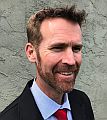FINANCIAL CASE FOR STREAMS: “EAP, the Ecological Accounting Process, is remarkable in its simplicity and is pragmatic. EAP starts with an understanding of the parcel because that is how communities regulate and plan land use. It is the parcel level where you get the information that you need to change practice to protect natural assets,” stated Tim Pringle, EAP Chair, at the time of release of Beyond the Guidebook 2022

“The vision for EAP set the challenge: develop a practical methodology, one that would be relevant to local government managers and the community, for determining the monetary value of drainage infrastructure and other services drawn (or adapted) to some degree from ecosystems. Initially, we saw EAP as a tool – that is, the EA Protocol – that would help practitioners calculate the opportunity cost of balancing ecological services with drainage infrastructure. However, the first demonstration applications revealed that the term EA Process more accurately describes the challenge of working with multiple intervenors,” stated Tim Pringle.










